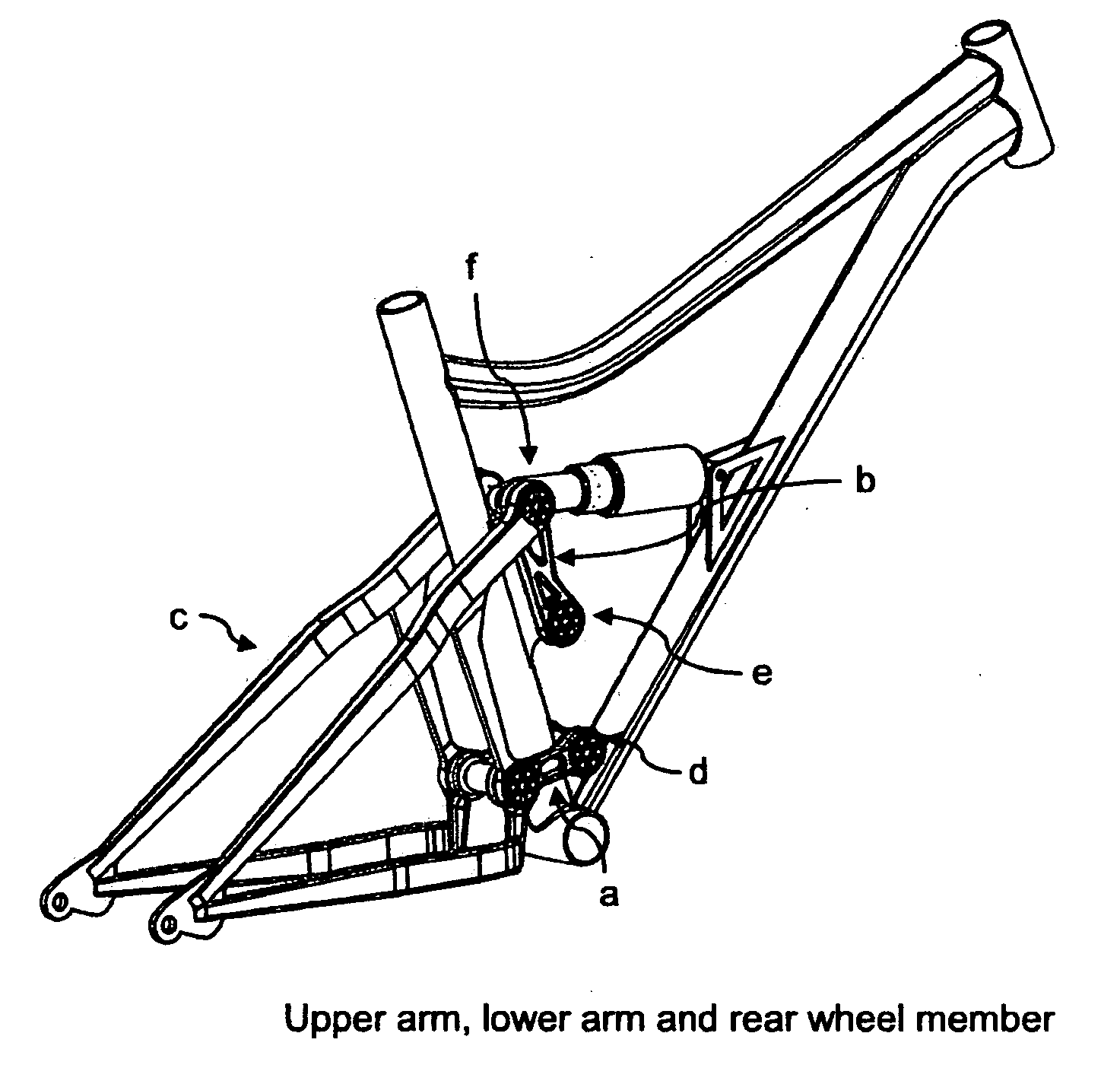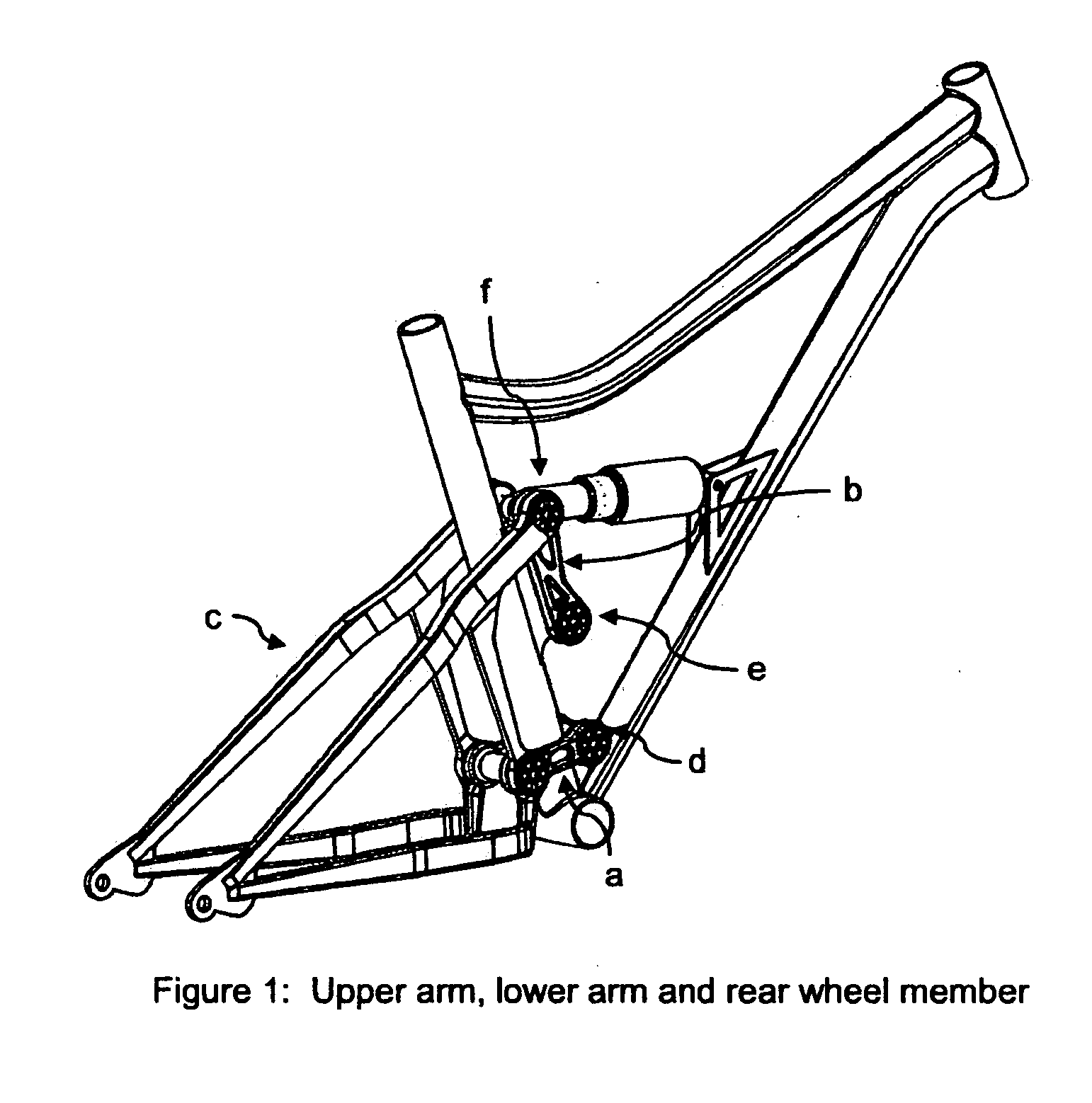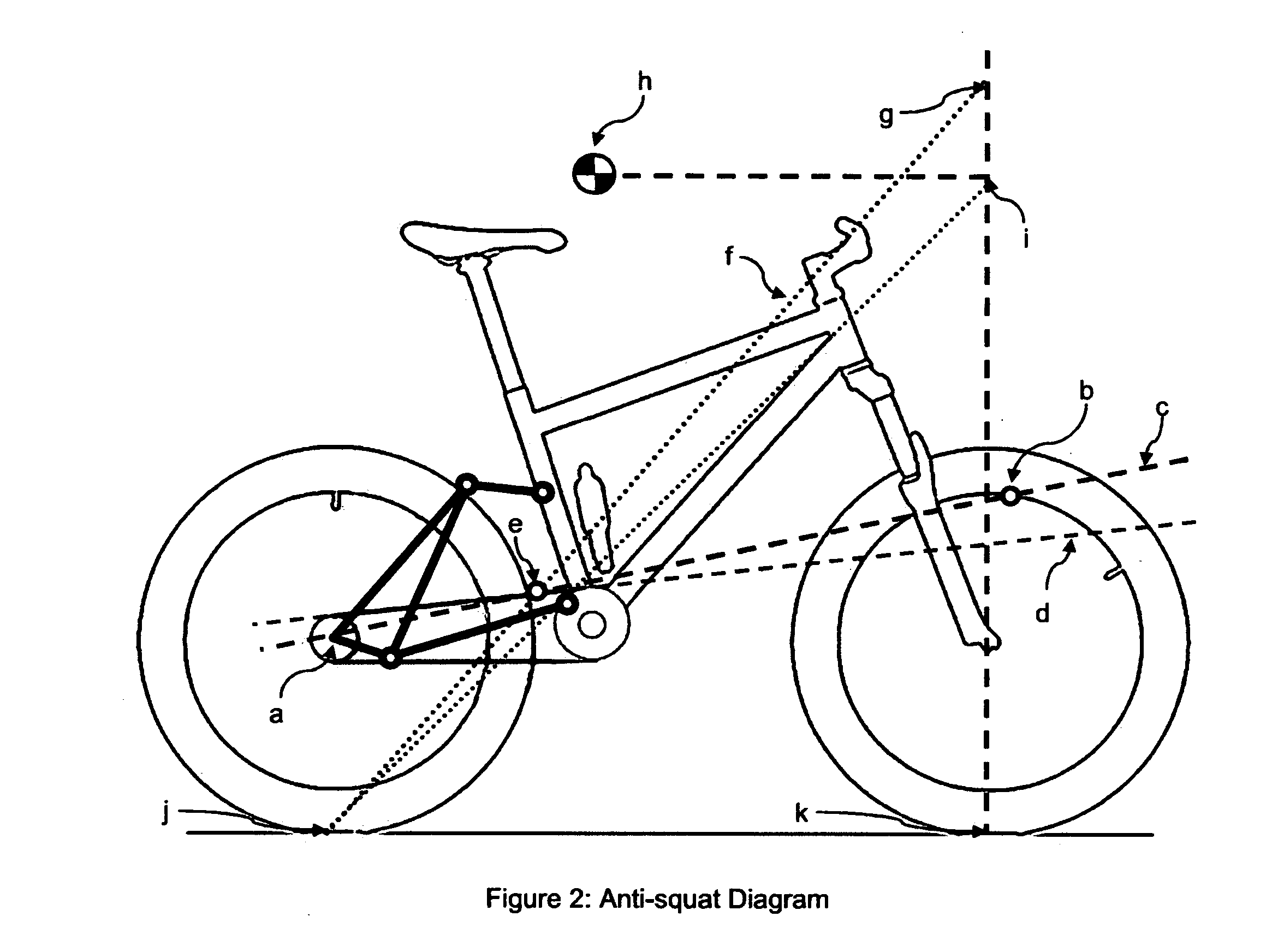Suspension System for Chain-Driven or Belt-Driven Vehicles
a suspension system and chain drive technology, applied in the direction of suspension arms, resilient suspensions, motorcycles, etc., can solve the problems of difficult to maintain consistent anti-squat and anti-ris
- Summary
- Abstract
- Description
- Claims
- Application Information
AI Technical Summary
Benefits of technology
Problems solved by technology
Method used
Image
Examples
Embodiment Construction
1 Anti-Squat
[0023]Anti-squat is described as a force that prevents the rear suspension from compressing due to weight transfer from acceleration. Bicycle suspensions have a natural tendency to compress or “squat” during acceleration. Having 100 percent anti-squat means that the suspension is able to totally counter the squatting force. The amount of anti-squat is calculated based on the diagram in FIG. 2.
[0024]Line 1 (2c) is defined by the rear axle (2a) and the current instantaneous center (2b). Line 2 is the chain force line (2d). The intersection of line 1 and line 2 defines point (2e). The line of anti-squat (2f) is defined by the rear tire contact patch (2j) and point (2e). The intersection of the anti-squat line and the vertical line from the front tire contact patch defines point (2g). The distance from point (2k) to point (2g) defines the amount of anti-squat. The percentage of anti-squat is measured from height (2i) which is at the same height as the center of gravity of th...
PUM
 Login to View More
Login to View More Abstract
Description
Claims
Application Information
 Login to View More
Login to View More - R&D
- Intellectual Property
- Life Sciences
- Materials
- Tech Scout
- Unparalleled Data Quality
- Higher Quality Content
- 60% Fewer Hallucinations
Browse by: Latest US Patents, China's latest patents, Technical Efficacy Thesaurus, Application Domain, Technology Topic, Popular Technical Reports.
© 2025 PatSnap. All rights reserved.Legal|Privacy policy|Modern Slavery Act Transparency Statement|Sitemap|About US| Contact US: help@patsnap.com



